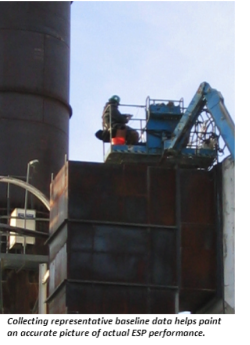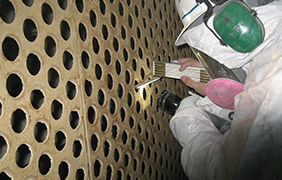Optimizing Your Precipitator: Performance Testing
In previous installments of this series on optimizing electrostatic precipitators, we examined the value of collecting data about your ESP’s design, the importance of properly maintained internals, and the relationship between different power circuit components. Next we move on to performance testing, another tool for determining just how well the ESP is working and what modifications will result in the biggest bang for your buck.
The performance testing discussed here is sometimes referred to as “EPA Method 17.” It involves inserting probes that contain filter into test ports while the ESP is running to measure gas dust loading. At the same time, flow, temperature and gas composition are determined. Testing is done at the inlet and at the outlet, and results are compared to determine overall collection efficiency.
The more representative data you can collect about how the ESP is operating today, the better off you’ll be when it comes to correlating test results and determining what actions should be taken. Since the goal is to understand what’s actually happening with the ESP, Method 17 typically involves 10-12 test runs (up to three runs per test condition) under varying conditions. For example, one run might be done at full load with normal load, another at normal load with no rapping, and another at 75% boiler load with no soot blowing and reduced ESP power input.
Method 17 testing provides a baseline picture of how well the ESP is running. For a more full picture of efficiency, it helps to simultaneously test fuel and ash samples, and collect other information such as primary/secondary current and voltage readings, CEMS data (Oxygen, NOx, opacity, etc.), and boiler O2%. All of this information can then be fed into a computer performance model to see the potential effect different modifications will have on collection efficiency.
Helpful Resources
KnowledgeBase: Theory of Operations
KnowledgeBase: Process Influences & Keys to Performance
KnowledgeBase: 2011 Boiler MACT Update
Our Capabilities: Emissions Compliance Planning & Management



